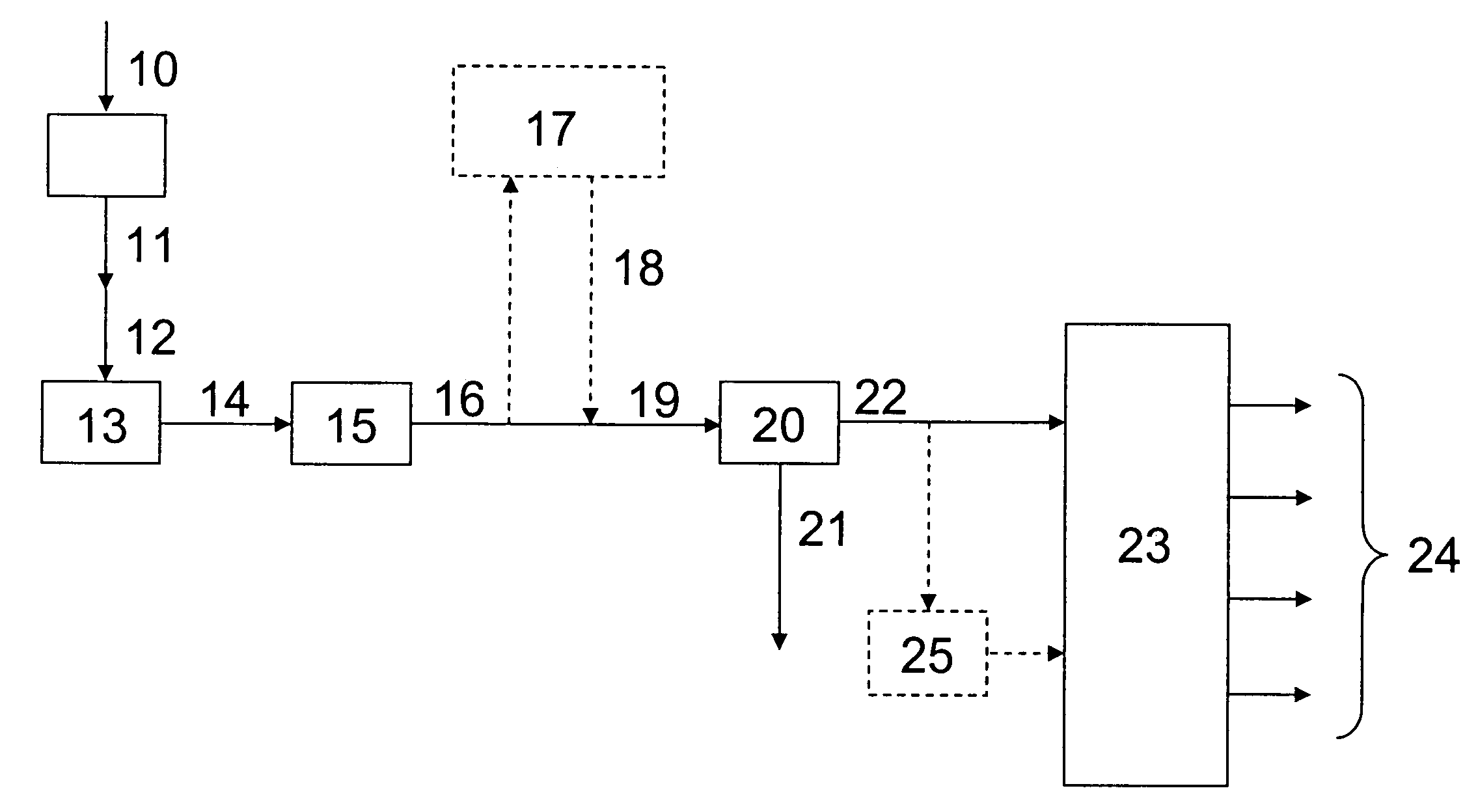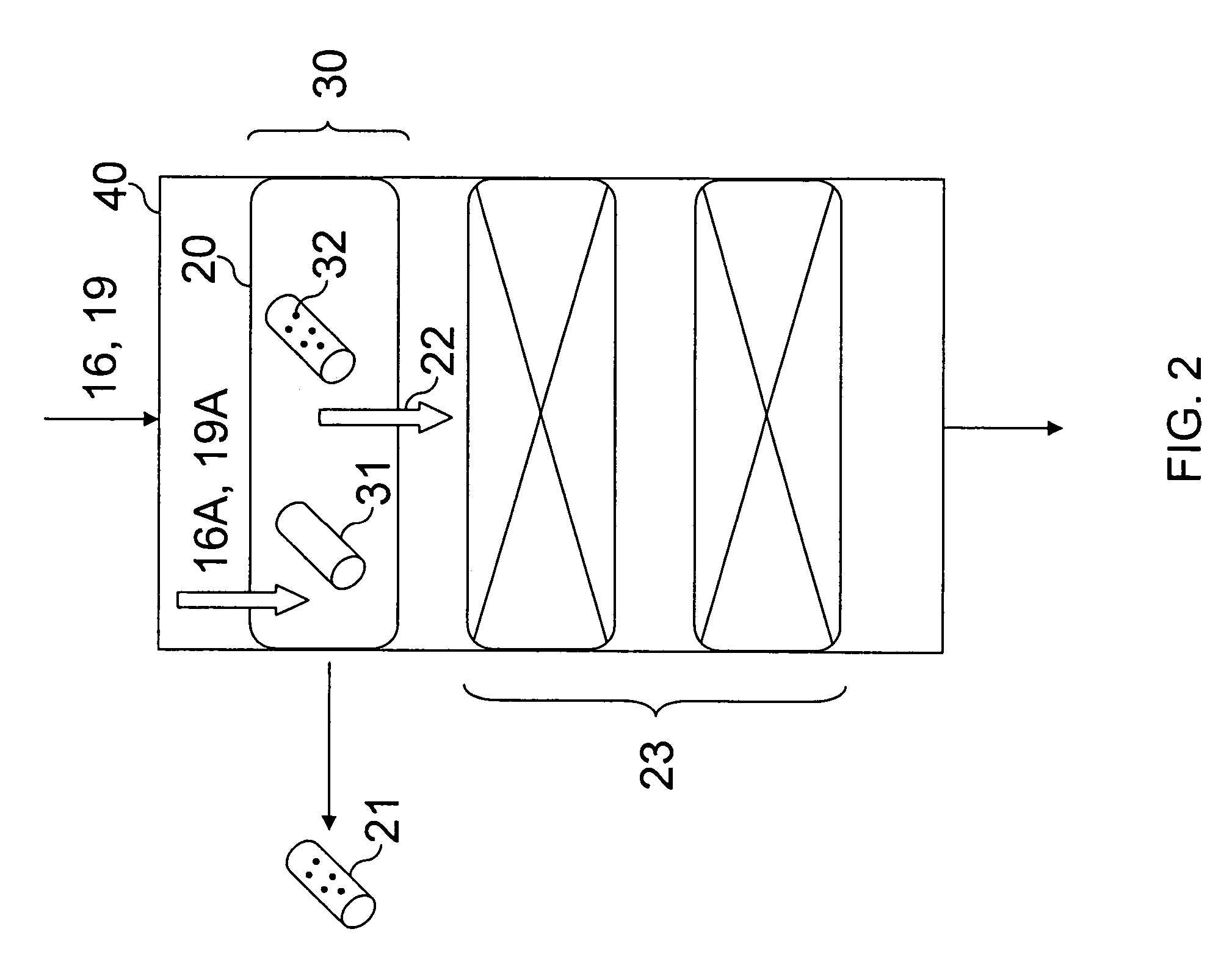Catalytic filtering of a Fischer-Tropsch derived hydrocarbon stream
a technology of catalytic filtering and fischertropsch, which is applied in the direction of physical/chemical process catalysts, separation processes, metal refining, etc., can solve the problems of contamination, contamination can create a serious problem, and upstream processing equipment rust and scal
- Summary
- Abstract
- Description
- Claims
- Application Information
AI Technical Summary
Benefits of technology
Problems solved by technology
Method used
Image
Examples
example 1
Catalytic Filtering of a Fischer-Tropsch Derived Hydrocarbon Stream
[0074]Experimental results showing the benefits of purifying a Fischer-Tropsch derived hydrocarbon feedstream with an active filtering catalyst are shown in FIG. 3. Removal of aluminum from a Fischer-Tropsch derived product stream was demonstrated by contacting a Fischer-Tropsch wax with a calcined α-alumina (defined as an alumina with substantially no hydrate content), and measuring the aluminun content of the Fischer-Tropsch wax as a function of temperature. The label of the y-axis of the graph (“product aluminum, in ppm), refers to the amount of aluminum remaining in the wax after contact with an active filtering catalyst. The label of the x-axis (CAT, in ° F.), stands for “catalyst averaged temperature,” which is a temperature normalized to a given conversion. In other words, a temperature is calculated to reflect what the reaction temperature would have been to maintain a given amount of reaction conversion.
[007...
PUM
| Property | Measurement | Unit |
|---|---|---|
| size | aaaaa | aaaaa |
| mesopore diameter | aaaaa | aaaaa |
| pore diameter | aaaaa | aaaaa |
Abstract
Description
Claims
Application Information
 Login to View More
Login to View More - R&D
- Intellectual Property
- Life Sciences
- Materials
- Tech Scout
- Unparalleled Data Quality
- Higher Quality Content
- 60% Fewer Hallucinations
Browse by: Latest US Patents, China's latest patents, Technical Efficacy Thesaurus, Application Domain, Technology Topic, Popular Technical Reports.
© 2025 PatSnap. All rights reserved.Legal|Privacy policy|Modern Slavery Act Transparency Statement|Sitemap|About US| Contact US: help@patsnap.com



